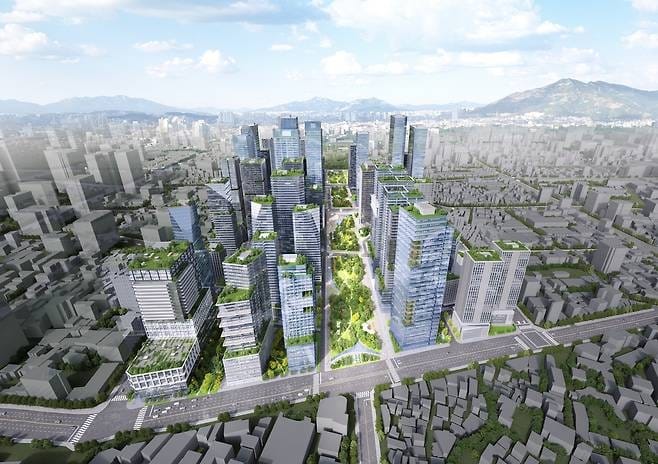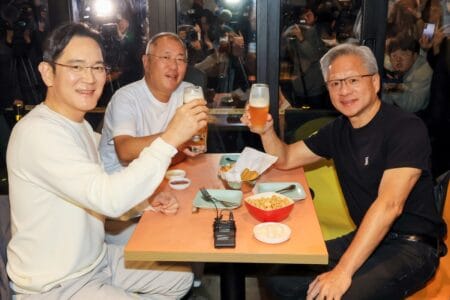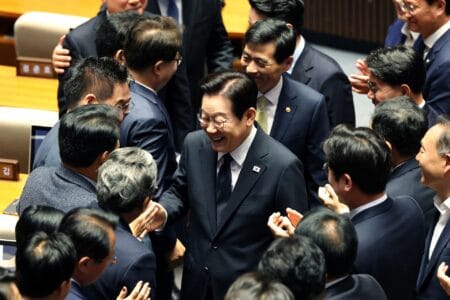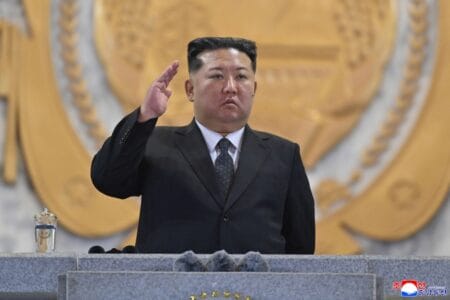November 5, 2025
SEOUL – Seoul’s approval of a 141.9-meter (approximately 34-story) building across from Jongmyo — Korea’s first UNESCO World Heritage site — has resurfaced a longstanding question: how far should urban renewal go when internationally recognized heritage is at stake?
The city recently revised height limits for the Sewoon District No. 4 redevelopment zone, easing the cap from the previous 71.9 meters to 141.9 meters on the Cheonggyecheon side. The change comes seven years after limits were first imposed following cultural heritage reviews.
Jongmyo, regarded as the most complete preserved Confucian royal shrine in East Asia, was inscribed on the UNESCO World Heritage List in 1995 and still hosts centuries-old ancestral rites for Joseon kings and queens. Figures from architect Frank Gehry to Korean academics have lauded its understated architectural rhythm and intact ceremonial atmosphere — often likened to an “Eastern Parthenon.”
Korea Heritage Service voices ‘deep regret’
The Korea Heritage Service issued an unusually strong statement Monday criticizing the city’s unilateral move.
It “expressed deep regret” that Seoul “changed and announced the redevelopment plan without implementing the UNESCO-recommended procedures,” stressing that the 71.9-meter limit had been reached through “continuous adjustment” with cultural heritage experts since 2009.
The agency emphasized UNESCO’s original inscription condition — that no high-rise construction should be permitted near Jongmyo that could affect its landscape — and noted that UNESCO had already recommended a Heritage Impact Assessment for the Sewoon redevelopment.
“We requested that the existing height limit be maintained and that the assessment be completed and its results reflected,” the KHS said, adding that Seoul “did not accept the request and enforced the change.”
Seoul cites legal compliance
The city argues the redevelopment site sits roughly 180 meters from Jongmyo, outside the 100-meter protected zone under local regulations. “Our plan is outside the regulatory scope, so changes are difficult,” said an official from the city’s Sewoon revitalization team.
However, experts argue that global standards differ. UNESCO encourages broader evaluation of visual corridors and cultural context, not only the legal buffers. A professor of architecture noted that “UNESCO has been paying particular attention to heritage management recently,” adding that if the city proceeds with an increased height cap of 142 meters, “UNESCO has ample grounds to intervene,” even raising the possibility of “World Heritage in Danger” monitoring.
Past informs current debate
Korea has faced similar tensions before. In 2021, apartments near the UNESCO-listed Jangneung royal tomb in Gimpo, Gyeonggi Province, triggered controversy after construction proceeded without proper review. Although stop-orders were issued, people began moving into the new apartments in 2022, prompting concern that development interests could overtake heritage safeguards.
UNESCO later remarked that the Jangneung case raised concerns about negative effects on cultural landscape values and warned of similar risks elsewhere.
In 2021, residents’ groups opposed high-rise buildings planned near Jeongneung, another Joseon-era royal tomb, prompting inquiries from UNESCO and eventual adjustment and scaling back of redevelopment.
These precedents suggest that UNESCO involvement is not hypothetical — it has happened before when Korea’s heritage settings faced development pressure.
Civic groups argue the Jongmyo case reflects a broader need for clearer, more proactive coordination between development authorities and heritage agencies.
“Even the Japanese didn’t build tall residential blocks near Jongmyo,” one preservation community member remarked, criticizing the lack of public engagement.
Frustration has surfaced within the government as well. “After 20 years of consultation, we were shocked they announced this so suddenly,” said an official from KHS, noting that the Seoul City Government has yet to commit to a timeline for the required heritage impact assessment.
The city maintains that redevelopment is vital for revitalizing the area around Sewoon Plaza and bringing overdue investment after two decades of stalled plans. Heritage authorities counter that globally-recognized cultural value must form part of that future.
As both sides prepare for further discussions, the outcome will likely influence not just the skyline near Jongmyo, but also how Korea navigates urban growth around its most treasured historical sites.







